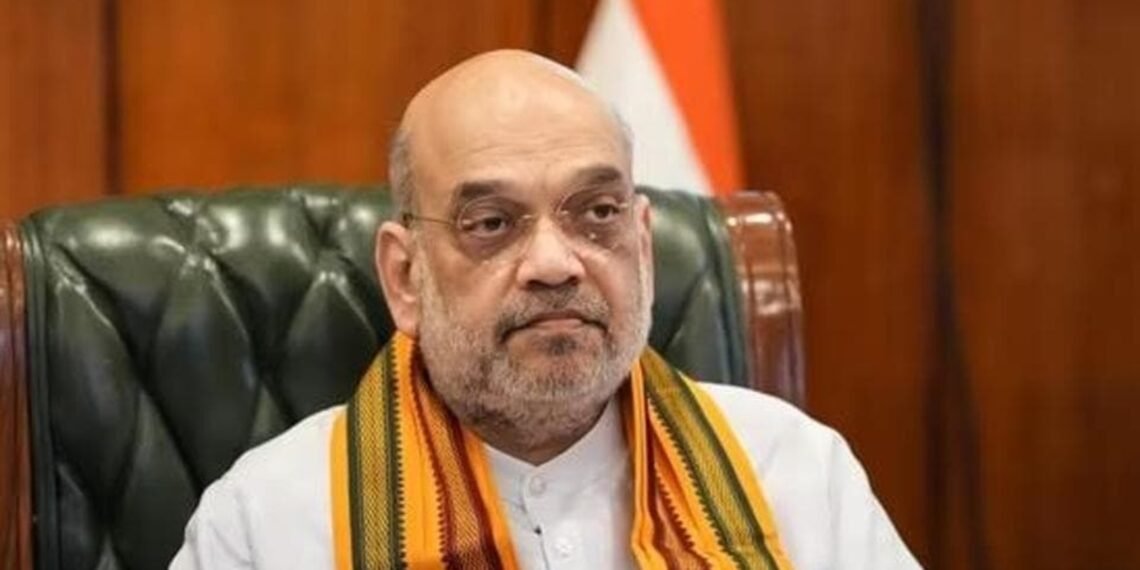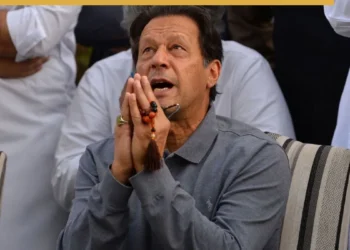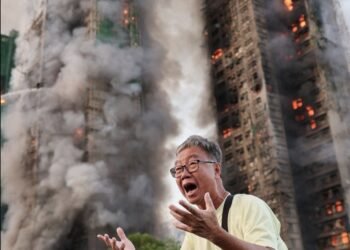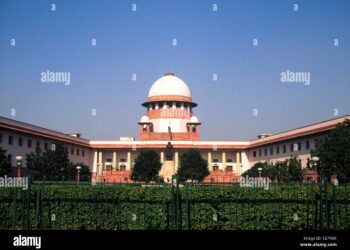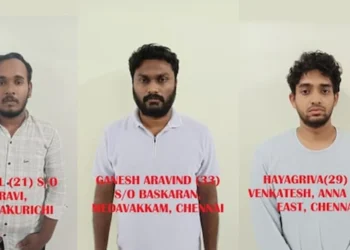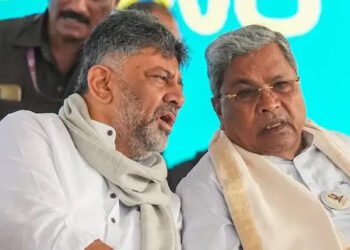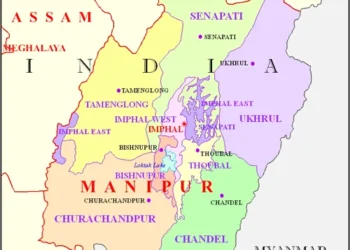Despite security deployments and weapon recovery efforts, Manipur remains a land of strife, not stability. Videos of armed militias and unpunished perpetrators of the 2023 violence expose the unease lurking beneath the fragile peace.
BY Navin Upadhyay
Home Minister Amit Shah’s assertion on Friday night at the Times Now Summit 2025 that “normal life has resumed in Manipur” and “things are gradually moving in a positive direction” presents an optimistic view that contrasts with the stark reality on the ground.
Undoubtedly, measures such as the imposition of President’s Rule, efforts to recover thousands of stolen weapons, and the improved movement of commercial vehicles across the state are positive steps. The substantial deployment of security forces and the appointment of an experienced bureaucrat like Ajay Bhalla further demonstrate the Centre’s commitment to restoring stability.
It’s clear that the government is working to steer the state back on track, but the lived reality of Manipur’s people paints a far bleaker picture—one marked by unrelenting strife, widespread displacement, and deep despair. Far from normalcy, the state remains engulfed in ethnic tensions and economic devastation, where even basic freedoms, such as safe travel, feel like a distant hope.
Kangleipak communist Party, planted a grenade outside house of Registar of NIT(National institute of imphal) in Manipur.
Manipur has seen worst wave of extortion and capital punishment by such communist groups. Recently they were threatening local female movie actors of… pic.twitter.com/dKUZYYEUOI
— Maj Digvijay Singh Rawat, KC (@Dig_raw21) March 29, 2025
Claims of “normalcy” fall flat when dozens of videos surface at regular intervals, showing armed groups training, proudly displaying their weapons, or casually playing football with AK-47 rifles slung over their shoulders. When no action has been taken against the perpetrators of the May 3, 2023, mayhem and arson—and its aftermath—regardless of which side they belong to, how can we even speak of normalcy?
ALSO READ: China’s Language Tactics: How ‘Xizang’ Reframes Tibet’s History
How can there be any semblance of normalcy when over 60,000 people remain confined to relief camps nearly two years after ethnic violence erupted between the valley-based Meiteis and the hill-dwelling Kuki-Zo tribes in May 2023? These camps, overcrowded and underfunded, are no longer temporary shelters but semi-permanent homes for families who have lost everything—land, livelihoods, and loved ones. Children grow up amid squalor, with little to no access to proper education, while adults face an uncertain future, unable to return to villages still scarred by arson and bloodshed.
The Home Minister’s optimism ignores the chilling reality of ethnic segregation. While commercial goods may move under armed escorts, private travel is a perilous gamble. Meiteis cannot venture into the Kuki-dominated hills without risking abduction or death, and Kukis face the same fate in the Imphal Valley. For Kukis, Imphal’s airport is out of bounds, forcing them to travel all the way to Aizawl in Mizoram to catch a flight. Similarly, those needing advanced medical treatment cannot risk traveling to Imphal’s upgraded hospitals and must journey to Mizoram instead. This isn’t normalcy—it’s a state of siege, with communities barricaded from one another, their social and economic ties severed.
Search operations and area domination were conducted by security forces in the fringe and vulnerable areas of hill and valley districts.
Movement of 286 nos. and 222 nos. of vehicles carrying essential items along NH-2 and NH-37 respectively has been ensured. Strict security… pic.twitter.com/4UiA9cRwGu
— Manipur Police (@manipur_police) March 29, 2025
The tension is so acute that even a Supreme Court judge couldn’t bridge the divide. On March 22, 2025, Justice N. Kotiswar Singh, a Meitei, was part of a six-member delegation led by Justice B.R. Gavai to assess the situation of internally displaced persons and strengthen legal support in the strife-torn state. But the Churachandpur District Bar Association (CDBA) explicitly warned that “Lordships belonging to the Meitei community” should not step into the Kuki-majority district, citing “peace and public order.”
This wasn’t an isolated protest but a symptom of a deeper malaise: a governance system so fractured that even judicial officers cannot function across ethnic lines. Justice Singh was forced to detour to Bishnupur while his colleagues proceeded to Churachandpur, a stark illustration of how ethnic divisions paralyze even the highest institutions.
Meanwhile, thousands of sophisticated weapons—looted from police armories during the initial unrest or smuggled across porous borders—remain in the hands of militias. These include assault rifles, grenades, and even rocket launchers, wielded by over 30 armed groups with agendas ranging from ethnic supremacy to insurgency to profit.
The drug trade adds another layer of chaos. Manipur’s proximity to the Golden Triangle has turned it into a trafficking hub, with heroin and methamphetamine flooding the region. Armed groups and corrupt officials rake in profits, funding their arsenals while poppy fields encroach on traditional farmland. This illicit economy doesn’t just undermine security—it strangles legitimate commerce.
Tourism, once a lifeline, has evaporated, with hotel occupancy plummeting to 20 percent. Private taxi operators, unable to ply routes safely, have gone out of business. Markets limp along under curfews, and infrastructure—roads, schools, power lines—crumbles unrepaired.
Shah’s claim of a “positive direction” also overlooks simmering inter-tribal tensions beyond the Meitei-Kuki divide. Recent clashes between the Hmar and Zo tribes in late 2024 and early 2025 have displaced hundreds more, while the Naga demand for territorial integration continues to stoke unrest.
The Naga push for a unified territory, championed by groups like the NSCN-IM, clashes with both the state government and other communities like the Meiteis , who oppose any redrawing of boundaries. These conflicts, layered atop the murderous rivalry between Kuki-Zo and Meitei groups, show a state unraveling along multiple fault lines. Peace talks may be underway, but they falter against mutual distrust and the intransigence of hardline factions.
The human toll is incalculable. Over 260 lives have been lost since May 2023, but the damage extends far beyond the body count. A mental health crisis festers as survivors grapple with grief, trauma, and hopelessness. Children in relief camps witness violence instead of attending school; parents mourn without closure. The social fabric—once a vibrant tapestry of diverse tribes—lies in tatters, replaced by suspicion and hate.
President’s Rule may have been a necessary step, but it has created a political vacuum, leaving the state adrift under a distant bureaucracy. Local leaders accuse the central administration of being disconnected from ground realities, while bureaucratic inertia hampers swift action. Normal life hasn’t resumed—it’s been replaced by a fragile limbo where survival, not progress, is the daily goal.
The following factors highlight why the situation in Manipur is far from normal or even near normal:
- Mass Displacement & Humanitarian Crisis: Over 60,000 remain in overcrowded, under-resourced relief camps since 2023, lacking sanitation, healthcare, and education, with no return timeline.
- Judicial Paralysis: On March 22, 2025, Meitei Judge N. Kotiswar Singh couldn’t visit Kuki-majority Churachandpur due to objections from the local bar association, reflecting ethnic tensions.
- Administrative Breakdown: Ethnic divisions block officials from working across community lines, delaying justice and eroding trust in institutions.
- Proliferation of Arms: Thousands of looted or smuggled weapons (rifles, grenades, rocket launchers) stay with militias, fueling violence as recovery falters.
- Armed Groups: Over 30 factions tied to ethnic, insurgent, or criminal goals extort, attack, and control territory, hindering peace efforts.
- Inter-Tribal Tensions: Disputes among Nagas, Hmars, and Zos over land and power turn Manipur’s diversity into a conflict source.
- Hmar-Zo Clashes: Late 2024 and early 2025 skirmishes in hill districts between Hmar and Zo tribes displaced hundreds, adding new fault lines.
- Naga Territorial Demand: The unresolved Naga push for a unified territory, led by NSCN-IM, fuels clashes and instability.
- Drug Smuggling: Proximity to the Golden Triangle drives drug trafficking, with profits funding armed groups and poppy fields overtaking farms.
- Political Vacuum: President’s Rule leaves Manipur without an elected government, stalling policy and reconstruction.
- Kuki-Zo vs. Meitei Rivalry**: Ongoing vengeance between Kuki-Zo and Meitei groups, rooted in land and power disputes, defies peace talks.
- Economic Stagnation: Violence has crippled markets, tourism, and schools, with unrepaired infrastructure deepening decay.
- Mental Health Crisis: Trauma and eroded social ties plague survivors, with scarce mental health support delaying recovery.


